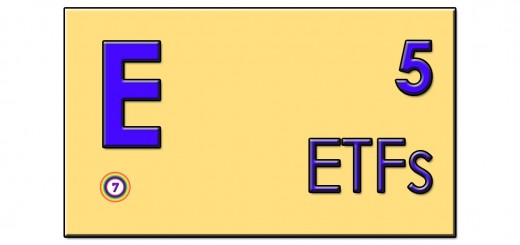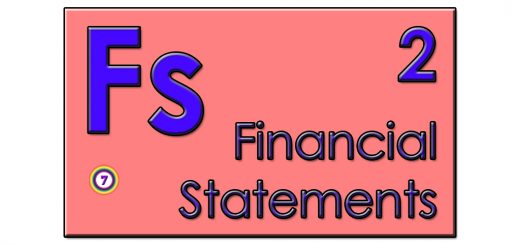Workplace Pensions – Elements 15

This post is part of the Elements series, a Periodic Table of all the Investing Elements that you need to take control of your financial life. You can find the rest of the posts here.
Workplace Pensions
What is it?
A Workplace Pension (WP) is, as you might guess, a pension that you are enrolled into by your employer.
Like a SIPP, it’s a tax-sheltered wrapper for your pension assets
- You put in money each year out of your earned income – up to an annual limit of £40K, or your salary, whichever is higher – and you get tax relief at your marginal (highest) rate – 20% / 40%.
- Your employer can / must also make gross contributions, and these count towards your annual allowance, too.
Once inside your WP, your investments grow free of income tax and capital gains tax, subject to a lifetime allowance (LTA) of £1M (across all your pensions).
- Unlike a SIPP, your employer will place restrictions on how you can manage the money inside the WP.
There have been three WP regimes during my career, with diminishing benefits to most employees.
- The Defined Benefits (DB) regime, still popular in the public sector
- Here you get a proportion of your final salary (usually 1/40th) for each year you are enrolled in the pension scheme
- Some schemes have replaced the final salary measure with career average salary, which is almost always lower and therefore cheaper for the employer
- The Defined Contribution (DC) regime
- Here the employer pays in a specific sum of cash each year (usually a percentage of salary) and has no further responsibility
- The recently introduced Auto Enrolment (AE) regime
- This is a form of DC scheme, but the employee is opted in by default, and must request in writing to come out of the scheme
- The AE scheme is currently worse than the typical DC scheme because the contribution levels are lower
- DC schemes were introduced to replace DB schemes, and so rates had to be closer to DB contribution levels from the start.
The AE scheme has been rolling out across all employers for a few years now, starting with the largest companies.
- By 2017, many one- and two-man firms will be enrolled
- All staff aged 22 or older and earning £10K pa or more are automatically enrolled
- Anyone earning more than £6K but less than £10K can ask to join
- The self-employed are not covered by AE
Minimum contributions are currently 2% of salary pa (1% from the employee and 1% from the employer), but are set to rise by 2019 to 8% pa (5% from the employee and 3% from the employer).
- Even 8% pa is well short of what is needed for a comfortable retirement (typically 15% to 20% of salary)
- And these rates only apply to salary between £5,824 and £43K pa
But at least the 8% is only costing the employee 4% – so the other 4% is free money
- And it’s being automatically deducted from your wages, so you are Paying Yourself First
- You’re contributing each month, so you benefit from Dollar Cost Averaging
- And your money is locked away until at least age 55, so you can’t spend it on a holiday or a new kitchen
In additions, there’s the possibility that your employer will allow you to sacrifice some of your salary as pension contributions, in return for larger (matching) contributions from the employer.
- There’s an ongoing government review of salary sacrifice arrangements, but pension contributions are exempt.
When you reach a minimum of age 55 (but more likely age 60 for a WP), you can start to take money out.
- This is known as the decumulation phase.
- Any withdrawals are taxed as income at your marginal rate at the time (hopefully 20% by then).
Your withdrawals each year are measured as a percentage of the LTA, and taken off your remaining LTA.
- So if you withdraw £25K in your first year of retirement, and the LTA is £1M, that’s a 2.5% withdrawal. The next year your LTA would start at 97.5%.
If you use up all of your LTA, any further withdrawals are taxed at 55%.
What kind of element is it?
A WP is a product, offered by several providers in the UK, but by many fewer than offer a SIPP.
Who needs it?
Everybody who is working and saving for retirement.
- The contributions from your employer will typically require you to make matched contributions of your own, but the employer contributions – and your own tax relief from the government – are both “free money” which should not be turned down.
- Once you have contributed enough to secure the full contribution from your employer, any additional savings should go into your SIPP, which offers more flexibility.
The tax treatment of WPs (and SIPPs) is superior to that of ISAs (which are taxed on the way in, but not the way out). See here for more details.
- The one caveat to this rule is if you expect to be able to retire before age 55 (or before you can access your WP, if that age is older).
- In this case you need to save some of your money into ISAs, so that you will have some income to get you from your early retirement (FIRE) age to the WP age.
- You can work out whether you will be able to retire before your WP age using our Four Pot Solution spreadsheet.
WPs (and SIPPs) are particularly attractive to higher-rate taxpayers, who get a bigger boost on the way in, and are likely to be in a lower tax-bracket in retirement.
What comes before it?
Before you can afford to save for a pension, you need to:
- build a short-term cash emergency fund (say six months of expenses)
- clear down all your debts (apart from your mortgage if you have one)
You will need to have a budget in order to make sure you are cash positive each year (in order to pay down your debts, build up your emergency fund and have money left to invest).
- You will also need a financial plan (how much money you will need and when, and how you will get there) and your financial statements to record your progress towards your goals.
What comes after it?
All of the other non-core investment products.
- SIPPs are the core product
- But if you use your full pension allowance, ISAs will also be of use to most people.
Even more exotic options include the recently announced LISA, and products like VCTs and EIS / SEIS.
Once you decide to retire – your WP can be converted into drawdown (or transferred into a SIPP), which allows you to withdraw cash each year.
What age do you need it from?
As soon as you’ve have:
- cleared your debts
- set up an emergency fund,
Twenty-five is a good age to start.
What age do you need it until?
At least age 55, since that is the earliest that the government will allow you to access your money.
- Most workplace schemes use a historic minimum age of 60, and this is likely to rise in the future.
There’s no compulsion to take money out from 55 (or 60), and you can keep on working, or just leave the money invested until you need it.
How much does it cost?
Costs can vary quite a bit, but should be under 1% pa.
- There is a cap on default funds of 0.75% pa
- But schemes can also charge monthly fees for handling your contributions into the scheme
- And you may prefer more expensive funds to the defaults
The fallback scheme set up by the government – the National Employment Savings Trust or NEST – charges 0.3% pa on your pension pot, but also deducts 1.8% from each contribution.
- This makes charges on small pots very high compared to the industry in general
Unfortunately, the choice of scheme is down to the employer, and if you are unhappy with the scheme they have chosen, your only option is to opt-out and forego the employer contributions.
What’s in it?
The range of investments inside a WP is likely to be much smaller than in your own SIPP.
- You can expect to find UK equities, international equities and bond, but there may not be much more than that available.
Again, if you are unhappy, your only option is to opt-out and forego the employer contributions.
- If possible, you should try to contribute to your own SIPP alongside your WP.
What does a good one look like?
Since a WP is just a wrapper for underlying investments, the main criteria for evaluating them are:
- costs
- range of available investments
- interface and support
A good WP is cheap, easy to use and offers a wide range of investments.
- Unfortunately, you will have to accept (or not) the scheme chosen by your employer, so knowing what good looks like won’t help much in this instance.
What does a bad one look like?
As usual, a bad one is the opposite of a good one – expensive, hard to use and with a poor range of investments.
- If your WP looks like this, try to contribute to your own SIPP alongside your WP, and use the SIPP to lower your average costs and / or increase your diversification across geographies and asset classes.
Any recommended brands?
Despite the high charges mentioned above, many reviewers end up recommending NEST.
- Which says a lot about the alternatives.
There’s an obvious conflict of interests here – employers are not incentivised to choose a WP scheme that is best for their employees.
What are the main risks?
WPs aren’t risky in themselves.
- Your assets should be ring-fenced if your WP provider fails, though only the first £50K of cash is guaranteed by the government.
WP merely provide you with a way to access underlying investments, which can be as risky as you choose.
- Diversification – perhaps through a SIPP run in parallel to the WP – is your best defence here.
How do you deal with these risks?
You should look at running a SIPP in parallel with your WP.
- Use the SIPP to increase diversification by investing in assets not available through your WP.
You might also want to keep the cash level in each of your WP and SIPP below £50K.
Until next time.
















